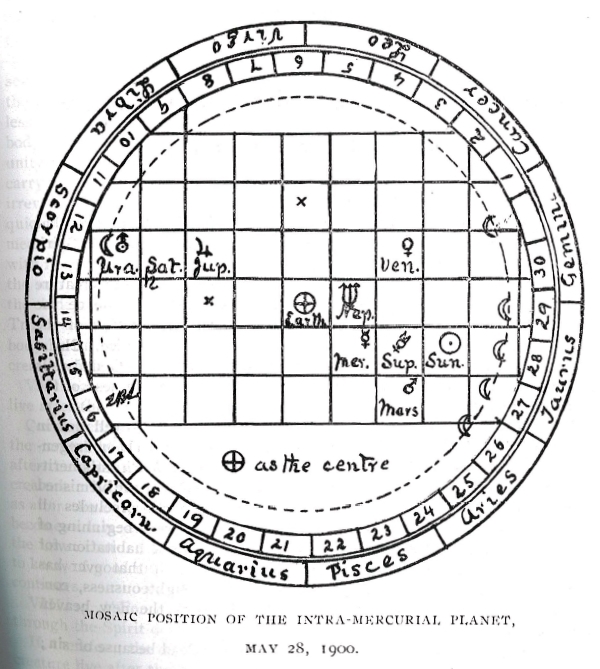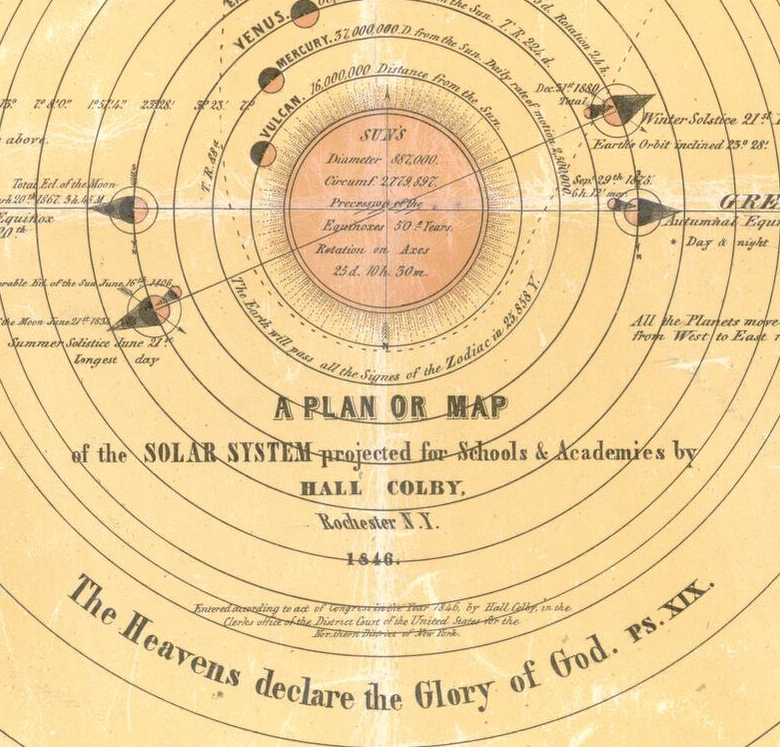|
In *Harper's New Monthly Magazine Vol. LVIII , December, 1878, To May 1879, reference is made, in the astronomical notes, to the work of the eminent astronomers Dr. Watson and Leverrier, on the supposed planet Vulcan, the existence of which has been affirmed and denied by our astronomers for years and still remains an unsettled question. Dr. Watson claims to have seen the planet during an eclipse of the sun and Leverrier during its transit across the Sun's disk. Leverrier in computing the orbit of this globe calls for an axial tilt or inclination of about 12 degrees; Dr. Watson in his calculations claimed a tilt or inclination of about 6 degrees. No succeeding researches by these scientists or others have ever proved or disproved the truth of their deductions.
Additional article in **Harper's New Monthly Magazine Vol. LVIII , December, 1878, To May 1879, reference is made, in the astronomical notes, to the work of the eminent astronomers Dr. Oppolzer, who says, "The existence of such an intra-Mercurial planet therefore appears probable."! Edward Latch calls this planet "Suppositive."
. . . . Planet Suppositive Twenty years after, Mr. Latch in his astronomical reading of the Codex Argenteus Page, found that the Mosaic System called for a planet between Mercury and the Sun he recognized that the tenth member of the Solar family must be the elusive Vulcan of astronomy. He named it the Suppositive Planet and from the Codex Page alone. By the Mosaic System he calculated its axial and orbital periods. The inclination or tilt of this planet he found to be 9 degrees — exactly the mean between Watson's 6, and Leverrier's 12 degrees. He had no knowledge of the work of Watson and Leverrier and never saw any matter printed or otherwise on the movements of this invisible member of the solar group. "Where is it now?" Velikovsky's Venus moving from orbit? Along with the depictions of the retrograde moon at Tiahuanaco, that is now missing. Could these be one and the same, and it was Suppositive? I think you see what I see now. Chan tells of the ancient astronomers of Tiahuanaco using telescopes like ours of today. And they tracked a satellite moon orbiting the earth moving West to East 449 times a year, which they used as a time standard, because its orbit was so accurate! Did planet "Suppositive" meet it's doom this fateful day? Or did it survive? Was it the planet of Abraham? Or was it the planet of Velikovsky - his Venus moving from orbit...? Velikovsky was all about the Second Age demise in 12,098 B.C. to me. Was this the retrograde Earth moon sattelite so spoken of at Tiahuanaco? Planet Suppositive is a mystery.
//∞\\ |

